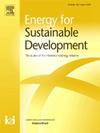可持续解决巴基斯坦能源危机的生物质发电综合技术经济评估
IF 4.9
2区 工程技术
Q2 ENERGY & FUELS
引用次数: 0
摘要
随着全球能源需求的上升和化石燃料储量的减少,对可靠的替代能源的需求变得至关重要。虽然太阳能和风能带来了环境效益,但它们的间歇性给电网稳定性和长期能源规划带来了挑战。生物质发电是一种可靠的、不受天气影响的可再生能源。本研究利用文献综述和实验室分析相结合的方法评估了巴基斯坦生物质能的技术和经济可行性。对各种生物质类型(包括农业残留物、木材和有机废物)进行了近似和最终分析,以确定水分含量、热值和灰分组成。结果表明,巴基斯坦的生物质资源有潜力每年产生高达609964千兆瓦时的电力,这是该国目前年用电量的四倍多。研究发现,生物质发电的成本为14.79卢比/千瓦时(0.051美元/千瓦时),大大低于传统能源的37卢比/千瓦时(0.132美元/千瓦时),投资回收期约为一年。该研究还探讨了通过烟气干燥和颗粒化来增强燃料,从而能够生产高质量的燃料颗粒,其水分含量低至4%。混合高热值和低热值生物质进一步提高了燃烧效率和能量输出。热力学模型,包括焓计算,支持将生物质整合到传统的动力循环中,如朗肯循环。此外,用生物质代替煤炭每年可减少高达143,148公吨的二氧化碳排放量。这些发现证实,生物质发电厂是一种技术上可行、经济上合理、环境上可持续的解决方案,可以满足巴基斯坦日益增长的能源需求。本文章由计算机程序翻译,如有差异,请以英文原文为准。
Comprehensive techno-economic assessment of biomass power generation for sustainable solution of Pakistan's energy crisis
As global energy demands escalate and fossil fuel reserves dwindle, the need for reliable alternative energy sources becomes critical. While solar and wind energy offer environmental benefits, their intermittency poses challenges for grid stability and long-term energy planning. Biomass power generation emerges as a dependable, weather-independent renewable option. This study assesses the technical and economic viability of biomass energy in Pakistan using a combined approach involving literature review and laboratory analysis. Proximate and ultimate analyses were conducted on various biomass types, including agricultural residues, wood, and organic waste, to determine moisture content, calorific value, and ash composition. Results show that Pakistan's biomass resources have the potential to generate up to 609,964 GWh per year, which is more than four times the country's current annual electricity consumption. Electricity from biomass was found to cost PKR 14.79/kWh (0.051 $/kWh), substantially lower than the PKR 37/kWh (0.132 $/kWh) from conventional sources, with a payback period of around one year. The study also explores fuel enhancement through flue gas drying and pelletization, enabling the production of high-quality fuel pellets with moisture content reduced to as low as 4 %. Blending high and low-calorific value biomass further improves combustion efficiency and energy output. Thermodynamic modeling, including enthalpy calculations, supports the integration of biomass into conventional power cycles such as the Rankine cycle. Additionally, replacing coal with biomass could reduce CO₂ emissions by up to 143,148 metric tons annually. These findings confirm that biomass power plants are a technically feasible, economically sound, and environmentally sustainable solution for Pakistan's growing energy needs.
求助全文
通过发布文献求助,成功后即可免费获取论文全文。
去求助
来源期刊

Energy for Sustainable Development
ENERGY & FUELS-ENERGY & FUELS
CiteScore
8.10
自引率
9.10%
发文量
187
审稿时长
6-12 weeks
期刊介绍:
Published on behalf of the International Energy Initiative, Energy for Sustainable Development is the journal for decision makers, managers, consultants, policy makers, planners and researchers in both government and non-government organizations. It publishes original research and reviews about energy in developing countries, sustainable development, energy resources, technologies, policies and interactions.
 求助内容:
求助内容: 应助结果提醒方式:
应助结果提醒方式:


